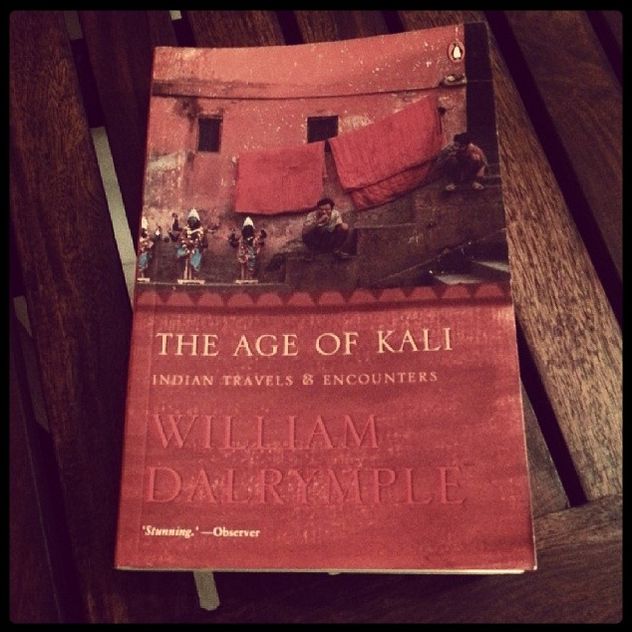William Dalrymple
I love doing this – reading a commentary long after the age has passed. It’s more than a decade and a half since the book was published and I’ve read four of the five books that the author has written since then. Both of these factors gave me quite a few perspectives on the book and the writing.
I see this book divided into two on multiple counts – first in terms of geography, second in terms of narrative style, and third in terms of being true to the ‘script’ of the book.
Almost two thirds of the book is set in India, and the rest across the subcontinent, including an island close to Mauritius. The first section begins with Bihar and the reversal of fortunes of classes, a wonderful chapter on the fading (faded would be more accurate) culture on Lucknow, a depressing chapter on the widows in Vrindavan, interviews with Vijayaraje Scindia and her contrasting personalities in personal and political roles, the University of Lucknow’s campus politics that also affects La Martiniere College, the tale of Bhanwari Devi, caste wars in the context of reservations for backward classes, the baffling sati episode of Roop Kanwar, a superb piece on Bombay that features Baba Sehgal, Shobha De, (some very candid conversations with her) and Pooja Bedi, rips Gary Lawyer but most importantly catches India at the beginning of a massive cultural transition which also involves Bangalore’s transformation into an IT hub and the invasion of a ‘fast food culture’. There are at least a couple of time travel instances in the next few chapters – a Goan’s perspective on what we call its ‘liberation’ and the influence of the Portugese, the temple and belief systems related chapters on Madurai and Chottanikkara, and a touching piece on Hyderabad and its Nizami past. These chapters are almost reportage and has limited narrator perspectives, though the wit is evident. In that sense, a ‘Butter Chicken in Ludhiana’ is a better representative of time and culture, but that being said, the very narration of events by a reasonably objective author is a perspective in itself. If this section appears depressing to you, do remember the title of the book. It is the age of Kali, when things are supposed to get real bad! In this section, I could also see many of the author’s later books being formed, and it’s a strange feeling to read something and somehow know that the words have an extended future.
The next section covers Lanka and the Tamil war for liberation, Reunion (an island in the Indian Ocean and a bizarre story of a patron saint) and an extended section on Pakistan featuring four prominent cities and two personalities who were of prime importance during that time – Imran Khan, and Benazir Bhutto. Though relatively shorter sections, they do offer quite some insight into the lives of various sections of society spread across the region. The narrative is more of perspective, insight, and less of reportage, and though I’m unsure about the Kali connection here, I’m glad it has been written, especially the part about the Greco-Buddhism that has survived at the Pak-Afghan border.
It is the narrative of an era and while one can criticise it being not a representative sample, it does offer quite a few snippets and at least some perspective and there was quite some wistfulness as I read about the first wave of non-DD channels, the first KFC outlet in Bangalore and the Miss World event, and yes, Pooja Bedi’s KS ad! I did enjoy the book, and while it may not be a relevant snapshot of India now, it does explain the present, at least a little bit.

